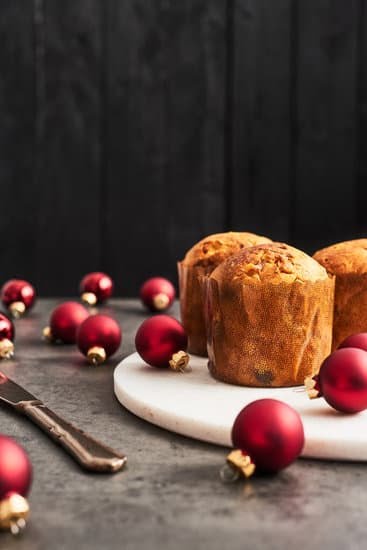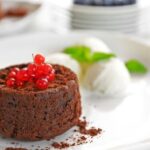When it comes to baking a cake, there is often an overwhelming sense of anticipation to bring out the icing and start decorating as soon as the cake is out of the oven. However, rushing this crucial step can lead to disastrous results. So, how long should a cake cool before you decorate it?
In this article, we will delve into the reasons why allowing a cake to cool is crucial for achieving the perfect texture and structure. Furthermore, we will explore how the cooling process affects the effectiveness of your icing and decorations.
One of the primary reasons why it is important to let a cake cool before decorating it is because the cooling process directly impacts its texture and structure. During baking, chemical reactions occur that allow the cake batter to transform into a fluffy, moist treat that we all love. The cooling stage allows these reactions to finalize and stabilize, ensuring that your cake retains its desired qualities.
Moreover, by not giving your cake sufficient time to cool down, you risk compromising the effectiveness of your icing and decorations. Warm or hot cakes could cause melting icing and smudging decorations, turning your beautifully decorated masterpiece into a messy disaster. Additionally, if you rush decoration before the cake has cooled completely, you might compromise its stability and risk damaging its shape.
By understanding why letting a cake cool is important for both its texture and structure as well as for effective decoration, you can ensure superior results in every bake. So now that we know why cooling is essential let’s dive further into understanding the science behind the cooling process in order to appreciate its significance even more.
The Cooling Process
When it comes to baking a cake, the cooling process is just as important as the baking itself. Allowing a cake to cool properly before decorating is crucial for achieving the desired texture and structure. During baking, various chemical reactions occur that transform the mixture of ingredients into a delicious cake. The cooling process helps to solidify these reactions and set the cake, making it easier to handle and decorate.
One key aspect of the cooling process is the role of proteins and fats. Proteins in ingredients such as eggs and flour coagulate during baking, giving the cake its structure. Fats, such as butter or oil, also play a role in creating tenderness and moisture in the cake. As the cake cools, these proteins and fats continue to firm up, contributing to its overall stability.
Additionally, proper cooling allows for better icing and decoration results. Cakes that are still warm may cause icings or frostings to melt upon contact, resulting in a messy appearance. Furthermore, if decorations are added while the cake is not thoroughly cooled, they may smudge or slide off due to the heat. By allowing sufficient time for cooling, you ensure that your icing and decorations will adhere properly for a beautiful final product.
The Role of Chemical Reactions
Understanding the science behind cake cooling involves recognizing how chemical reactions occur throughout the baking process. When a cake batter is placed in an oven with controlled temperature settings, several changes take place within its components. For instance, leavening agents like baking powder or baking soda create bubbles of carbon dioxide gas when exposed to heat. These gas bubbles expand during baking but gradually collapse as they lose heat during the cooling process.
Additionally, sugar undergoes caramelization during baking due to exposure to high temperatures. As caramelization occurs, it imparts rich flavors and enhances browning on top of cakes known as the “crust.” Proper cooling allows this crust to set while maintaining its desirable texture and appearance.
The Importance of Cooling Time
The duration of cooling time can vary depending on the type of cake being baked. Generally, most butter cakes require 45 minutes to an hour of cooling time. Sponge cakes, on the other hand, are lighter and airier, so they usually require a longer cooling period of up to two hours. Chocolate cakes fall somewhere in between, typically needing around one hour to cool adequately.
It’s important to remember that the ingredients used and the cooking method employed can influence the cooling times for different types of cakes. Cakes with higher fat content may need additional time to cool as fats take longer to solidify. Additionally, larger cakes will retain more heat and may necessitate a longer cooling period compared to smaller ones.
By understanding the role of chemical reactions and the significance of cooling time in baking, you can appreciate why it is essential to let your cake thoroughly cool before proceeding with decoration. Taking the time for proper cake cooling results in a more stable structure, improved texture, and better adherence of icings and decorations for a flawless finish.
Cooling Time for Different Cake Types
Each type of cake requires a specific cooling time to ensure optimal texture and structure. Here are some guidelines for cooling different types of cakes:
- Butter Cakes: Butter cakes, such as vanilla or pound cakes, typically require a longer cooling time due to their denser texture. It is recommended to let butter cakes cool in the pan for about 10-15 minutes before transferring them to a wire rack to cool completely. The total cooling time can range from 1-2 hours.
- Sponge Cakes: Sponge cakes are known for their light and airy texture, which means they require less cooling time compared to butter cakes. After baking a sponge cake, allow it to cool in the pan for about 5 minutes, then gently remove it from the pan and let it cool completely on a wire rack. The total cooling time for a sponge cake is usually around 30-45 minutes.
- Chocolate Cakes: Chocolate cakes often have added moisture from ingredients like cocoa powder or melted chocolate. This extra moisture requires slightly longer cooling times compared to other types of cakes. Allow chocolate cakes to cool in the pan for about 15-20 minutes before transferring them to a wire rack. The total cooling time can range from 1-1.5 hours.
It’s important to note that the size and thickness of the cake layers can also affect the cooling time. Thicker layers may require more time to cool compared to thinner ones. Additionally, if you’re using nonstick pans, the heat retention properties may result in quicker cooling times.
To ensure proper cooling, always follow the recipe instructions and check for visual cues that indicate the cake is ready for decoration. These cues include the cake pulling away from the sides of the pan and a slight springiness when lightly touched.
| Type of Cake | Cooling Time |
|---|---|
| Butter Cakes | 1-2 hours |
| Sponge Cakes | 30-45 minutes |
| Chocolate Cakes | 1-1.5 hours |
Remember that these are general guidelines and actual cooling times may vary slightly based on your specific recipe and oven. Patience is key when it comes to cooling cakes, as rushing the process can result in melted icing, smudged decorations, or even a compromised cake structure. Taking the time to properly cool each type of cake will ultimately lead to a superior end result when it comes to taste, texture, and presentation.
Factors Affecting Cooling Time
The time it takes for a cake to cool before decorating can vary depending on several factors. Understanding these factors can help you determine the appropriate cooling time for your specific cake. Here are some key elements that can speed up or slow down the cooling process:
Cake Size
The size of your cake plays a significant role in the cooling time. A larger cake will retain more heat and take longer to cool compared to a smaller one. If you have baked multiple layers or a particularly big cake, be prepared to allow for a longer cooling time.
Pan Material
Different pan materials conduct heat differently, which affects the cooling rate. Metal pans tend to transfer heat more efficiently than glass or ceramic ones. Therefore, cakes baked in metal pans will cool faster. Additionally, non-stick pans may also affect cooling time since their surfaces reduce sticking and create airflow, allowing cakes to cool slightly quicker.
Ambient Temperature and Humidity
The temperature and humidity of your environment can impact how quickly your cake cools down. Cakes will typically cool faster in cooler environments with low humidity. In contrast, hot and humid conditions can prolong the cooling process. If you’re in a hurry or working in unfavorable conditions, consider moving your cake to an air-conditioned room or near a fan to expedite cooling.
Adjusting Cooling Time
If you find yourself needing to speed up or slow down the cooling process of your cake, there are some tricks you can use. For instance, placing the warm cake on a wire rack allows air circulation around all sides, helping it cool more quickly. Alternatively, refrigerating the cake can accelerate the cooling process if needed.
On the other hand, if you want to slow down cooling because you need extra time for preparations or don’t want the cake to cool too quickly, you can cover it loosely with plastic wrap or a clean kitchen towel. This will trap some of the cake’s heat and slow down the cooling process.
By considering these factors and utilizing appropriate methods, you can effectively manage the cooling time of your cake, ensuring it is ready for decorating when the time comes. Remember that taking the time to properly cool your cake will ultimately result in a more stable and visually appealing final product.
The Dangers of Decorating a Warm Cake
Decorating a cake while it is still warm can lead to several issues that can negatively impact the final result. When a cake is warm, the icing and decorations are more likely to melt and become runny. This can ruin the appearance of the cake and make it difficult to achieve the desired design. Additionally, warm icing may not set properly, causing it to slide off or smudge when trying to decorate.
Another danger of decorating a warm cake is that it can compromise its stability. Warm cakes have a softer texture, making them more prone to crumbling or breaking apart when handled or decorated. This can be especially problematic when working with intricate designs or delicate decorations that require precise handling.
To further illustrate the risks of decorating a warm cake, consider the following common mistakes made when rushing the process:
- Melting Icing: When hot cake meets cool icing, it creates heat transfer that causes the icing to melt. This leads to a messy appearance and difficulty in achieving smooth, clean lines.
- Smudging Decorations: Warm cakes have soft surfaces, so applying pressure while decorating can cause decorations, such as piped designs or sugar flowers, to smear or lose their shape.
- Uneven Consistency: If icing is applied to a warm cake, it may not set properly and can result in an uneven texture or an unattractive glossy appearance.
To avoid these issues and ensure a successful cake decorating experience, it is crucial to allow your cake sufficient time to cool completely before beginning any decoration. Rushing this step may lead to frustration, wasted effort, and ultimately a less visually appealing end product. By taking the time to let your cake cool properly, you’ll have better control over your decorations and achieve a more professional-looking finished product.
Here are some helpful signs that indicate your cake has cooled adequately:
- The sides of the cake pull away slightly from the pan edges.
- The top of the cake feels firm and springs back gently when touched.
- A cake tester or toothpick inserted into the center comes out clean with no wet batter clinging to it.
By being patient and allowing your cake to cool completely, you can avoid the dangers associated with rushing the decorating process. Taking this extra time will ensure a more successful outcome, both in terms of taste and appearance. Remember, a little patience goes a long way when it comes to achieving a professional finish on your decorated cakes.
Signs of a Properly Cooled Cake
Knowing when your cake is properly cooled is crucial before moving on to the exciting stage of decorating. There are several visual cues that can indicate whether your cake has been cooled sufficiently. One common sign is the cake pulling away from the sides of the pan.
As the cake cools, it naturally shrinks slightly, creating a small gap between the cake and the pan. This is a good indication that the heat has dissipated and that it’s safe to remove the cake from the pan for decorating.
Another way to assess if your cake is ready for decoration is by giving it a gentle touch. A properly cooled cake should have a slight springiness to it when pressed lightly with your fingertips. If it feels dense or still warm, it likely needs more time to cool. Keep in mind that larger cakes generally require more cooling time compared to smaller ones.
To further ensure that your cake has properly cooled, you can also use a cake tester or toothpick. Insert it into the center of the cake and then remove it.
If it comes out clean or with just a few crumbs clinging to it, this indicates that the inside of the cake has reached room temperature and no residual heat remains. On the other hand, if batter or wet crumbs cling to the tester, this suggests that the inside may still be warm and requires additional cooling time.
By paying attention to these signs, you can determine when your cake has fully cooled and is ready for decoration. It’s important not to rush this step, as impatiently decorating a warm cake can lead to icing melting off, decorations smudging, or even compromising the stability of multiple layers if you’re working with stacked cakes.
Taking the time to let your cakes cool properly allows for better adhesion of icing and decorations while ensuring optimal taste and presentation in every bite.
Cooling Techniques and Best Practices
To ensure that your cake cools properly and efficiently, there are various techniques and best practices you can follow. While it’s important to let the cake cool naturally, there are ways to speed up the process without compromising its quality.
One effective cooling technique is to transfer the cake from the baking pan onto a wire rack. This allows air to circulate underneath and around the cake, promoting faster and more even cooling. Placing a towel or parchment paper on the wire rack can prevent any marks or indentations on your cake.
Another option is to refrigerate the cake for accelerated cooling. Once you remove it from the oven, allow it to cool at room temperature for about 10-15 minutes before transferring it to the refrigerator. The cold temperature helps solidify fats in the cake, giving it a firmer structure while speeding up the cooling process.
Using a fan can also aid in faster cake cooling. Place a table fan near your cake, ensuring that it is set on a low setting. The gentle breeze helps evaporate moisture from the surface of the cake, resulting in quicker cooling.
When your cake has cooled completely, proper wrapping and storage are crucial to maintain its freshness before decorating. Use plastic wrap or foil to tightly cover the cooled cake, preventing any moisture loss or absorption. You can then store it at room temperature or in the refrigerator depending on its specific needs.
By utilizing these cooling techniques and best practices, you can achieve a faster cooling time without compromising the quality of your cake. However, it’s important not to rush this step as allowing sufficient time for cooling is crucial for achieving a professional finish and optimal taste and texture in your decorated masterpiece.
Patience and Timing
When it comes to decorating a cake, patience is truly a virtue. Rushing the process by decorating a cake that hasn’t fully cooled can lead to disastrous results. It’s important to allow sufficient cooling time in order to achieve a professional finish that not only looks amazing but also tastes delicious.
By patiently waiting for your cake to cool, you ensure that the icing sets properly and adheres to the cake’s surface. A hot or warm cake can cause the icing to melt, resulting in a messy and unattractive appearance. Additionally, decorating a warm cake can cause any decorations or garnishes placed on top to smudge or slide off.
Another reason why allowing your cake to cool is crucial is the stability of the structure. During the baking process, chemical reactions occur that give the cake its structure and texture. If you attempt to decorate before the cake has had enough time to cool, it may still be too soft and fragile, making it prone to collapsing or breaking under the weight of the decorations.
To ensure a thoroughly cooled cake, there are some visual cues you can look out for. The edges of the cake should start pulling away from the pan slightly, indicating that it has shrunk as it cooled. When gently touching the center of the cake with your finger, it should spring back slightly rather than leave an indentation.
To speed up the cooling process without compromising quality, there are several techniques you can use. Transferring your cake from its baking pan onto a wire rack allows air to circulate evenly around it and promotes faster cooling. Placing your cooled cakes in the refrigerator can also help expedite the process while maintaining moisture.
Conclusion
In conclusion, allowing a cake to cool before decorating is crucial for achieving the best results. The cooling process is not just about preventing melted icing or smudged decorations – it actually plays a significant role in the texture and structure of the cake itself. By properly cooling the cake, you ensure that it maintains its shape and stability, creating a solid foundation for your decorations.
The science behind cake cooling is fascinating. During baking, chemical reactions occur that give the cake its structure and flavor. Cooling allows these reactions to fully complete and ensures that the proteins and fats within the cake set properly. Without adequate cooling time, these elements may not fully mature, resulting in a dense or mushy texture.
Different types of cakes require different cooling times due to variations in ingredients and cooking methods. It’s important to follow specific guidelines for each type of cake to achieve optimal results. For instance, butter cakes typically need longer cooling times because of their high fat content, while sponge cakes cool more quickly due to their lighter texture.
Factors such as cake size, pan material, and ambient temperature can affect the cooling time as well. It’s important to consider these factors when determining how long your cake should cool. Adjustments can be made by transferring the cake to a wire rack or even refrigerating it for a faster cooldown without sacrificing quality.
Frequently Asked Questions
How do you cool a cake for decorating?
Cooling a cake properly is crucial before starting the decorating process. The first step is to remove the cake from the oven and let it cool in the baking pan for about 10 minutes. During this time, the cake will slightly shrink away from the sides of the pan, making it easier to remove.
After 10 minutes, carefully invert the cake onto a wire rack and allow it to cool completely. Placing the cake on a wire rack allows air to circulate around it, which helps prevent moisture from building up and causing a soggy texture. It’s important to ensure that the cake is completely cooled down before moving on to frosting and decorating, as warm cake layers can cause the frosting to melt or slide off.
Should you refrigerate cake before frosting?
Refrigerating a cake before frosting depends on various factors. In most cases, it is not necessary to refrigerate the cake prior to frosting unless stated in a specific recipe or under certain circumstances such as hot weather conditions causing temperature instability. Generally, if you are using buttercream or cream cheese frosting, it is recommended to apply it directly onto a cooled room temperature cake.
However, if you have made a filling or frosting that contains perishable ingredients like fresh cream or fruit, refrigerating the cake between layers can be beneficial for maintaining its stability. Remember that bringing cold cakes back to room temperature before serving enhances their taste and texture.
Is it better to decorate a cold cake?
When it comes to decorating cakes, working with a cold cake is often advantageous. A chilled cake has firmer layers and crumbs attach less easily to icing when applying an initial layer of frosting known as crumb coat or crumb sealant. This initial layer seals in any loose crumbs while providing a smooth foundation for additional decorations or icing layers later on.
Moreover, certain decorative techniques like piping intricate designs may require more precision and control which can be easily achieved on a colder surface where frosting will set faster. However, keep in mind that working with very cold cakes might cause condensation once brought back to room temperature, so allow the cake to sit and settle at room temperature for a while before serving.

Welcome to our cake decorating blog! My name is Destiny Flores, and I am the proud owner of a cake decorating business named Cake Karma. Our mission is to provide delicious, beautiful cakes for all occasions. We specialize in creating custom cakes that are tailored specifically to each customer’s individual needs and tastes.





